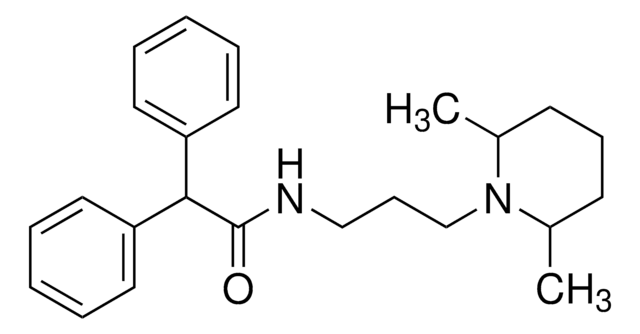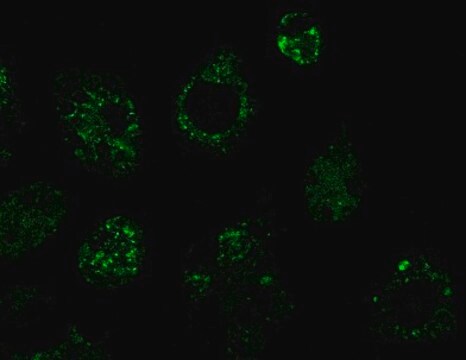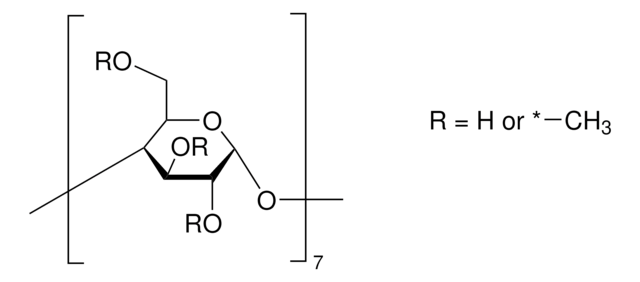SCT079
BioTracker CoxFluor Live Cell Dye
Iniciar sesiónpara Ver la Fijación de precios por contrato y de la organización
About This Item
UNSPSC Code:
12352207
NACRES:
NA.47
Productos recomendados
assay
≥95% (HPLC)
form
lyophilized
mol wt
calculated mol wt 501.66
packaging
pkg of 1 mg
manufacturer/tradename
Millipore
storage condition
desiccated
protect from light
technique(s)
cell based assay: suitable
color
off-white
fluorescence
λex 540 nm; λem 590 nm
detection method
fluorometric
shipped in
ambient
storage temp.
−20°C
General description
Cyclooxygenase (COX), also known as Prostaglandin-endoperoxide synthase (PTGS), is the key enzyme in prostaglandin biosynthesis. There are two isozymes of cyclooxygenase: a constitutive COX-1 and an inducible COX-2, which differ in their regulation of expression and tissue distribution. COX-2 overexpression is prominent in inflammatory diseases, neurodegenerative disorders, and cancer. Directly monitoring COX-2 activity within its native environment poses an exciting approach to investigate the effect of the local environments on protein activity.
BioTracker CoxFluor Live Cell Dye is an isoform selective activity-based sensor for COX-2. The probe may be used for COX-2 inhibitor screening assays and for monitoring COX-2 activity in live cells by confocal microscopy or flow cytometry. CoxFluor strategically links a natural substrate with a dye precursor to engage both the cyclooxygenase and peroxidase activities of COX-2. This catalyzes the release of resorufin and the natural product, as supported by molecular dynamics and ensemble docking. CoxFluor enabled the detection of oxygen dependent changes in COX-2 activity that are independent of protein expression within live macrophage cells.
Spectral Properties
Absorbance: 540 nm
Emission: 590 nm
Reference:
1. Yadav, A. K., Reinhardt, C. J., Arango, A. S., Huff, H. C., Dong, L., Malkowski, M. G., ... & Chan, J. (2020). An Activity?Based Sensing Approach for the Detection of Cyclooxygenase?2 in Live Cells. Angewandte Chemie, 132(8), 3333-3340.
BioTracker CoxFluor Live Cell Dye is an isoform selective activity-based sensor for COX-2. The probe may be used for COX-2 inhibitor screening assays and for monitoring COX-2 activity in live cells by confocal microscopy or flow cytometry. CoxFluor strategically links a natural substrate with a dye precursor to engage both the cyclooxygenase and peroxidase activities of COX-2. This catalyzes the release of resorufin and the natural product, as supported by molecular dynamics and ensemble docking. CoxFluor enabled the detection of oxygen dependent changes in COX-2 activity that are independent of protein expression within live macrophage cells.
Spectral Properties
Absorbance: 540 nm
Emission: 590 nm
Reference:
1. Yadav, A. K., Reinhardt, C. J., Arango, A. S., Huff, H. C., Dong, L., Malkowski, M. G., ... & Chan, J. (2020). An Activity?Based Sensing Approach for the Detection of Cyclooxygenase?2 in Live Cells. Angewandte Chemie, 132(8), 3333-3340.
Application
Purity ≥ 95% confirmed by HPLC. Identification confirmed by HNMR, LC-MS, and elemental analysis.
Features and Benefits
Fluorescent probe for monitoring COX-2 activity in live cells by confocal microscopy or flow cytometry.
Physical form
Lyophilized. Off-white solid.
Storage and Stability
Store at -20°C, desiccate and protect from light
Note: Centrifuge vial briefly to collect contents at bottom of vial before opening
Note: Centrifuge vial briefly to collect contents at bottom of vial before opening
Other Notes
Live cell fluorescent imaging
Disclaimer
Unless otherwise stated in our catalog or other company documentation accompanying the product(s), our products are intended for research use only and are not to be used for any other purpose, which includes but is not limited to, unauthorized commercial uses, in vitro diagnostic uses, ex vivo or in vivo therapeutic uses or any type of consumption or application to humans or animals.
Storage Class
11 - Combustible Solids
wgk_germany
WGK 3
flash_point_f
Not applicable
flash_point_c
Not applicable
Certificados de análisis (COA)
Busque Certificados de análisis (COA) introduciendo el número de lote del producto. Los números de lote se encuentran en la etiqueta del producto después de las palabras «Lot» o «Batch»
¿Ya tiene este producto?
Encuentre la documentación para los productos que ha comprado recientemente en la Biblioteca de documentos.
Nuestro equipo de científicos tiene experiencia en todas las áreas de investigación: Ciencias de la vida, Ciencia de los materiales, Síntesis química, Cromatografía, Analítica y muchas otras.
Póngase en contacto con el Servicio técnico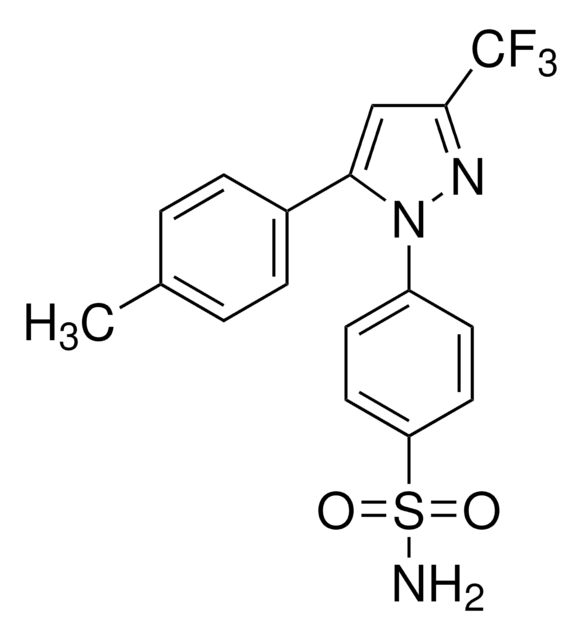
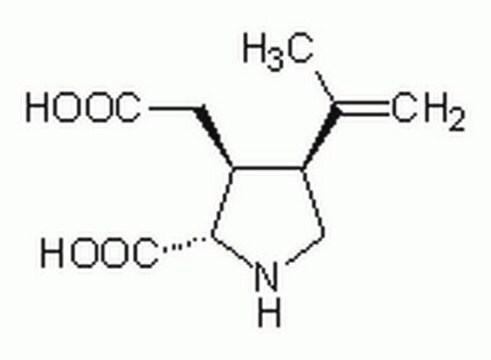

![6-bromobenzo[cd]indol-2(1H)-one AldrichCPR](/deepweb/assets/sigmaaldrich/product/structures/405/072/57c80f10-87f7-417b-86be-3eb3c7762682/640/57c80f10-87f7-417b-86be-3eb3c7762682.png)
